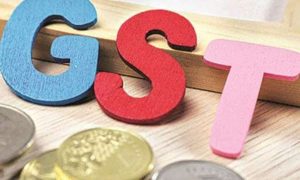The GST Council could reduce the four tax slabs that currently exist — 5%, 12%, 18%, and 28% — to three — 8%, 18%, and 28% — two government officials familiar with the matter said on condition of anonymity, adding that the move is aimed at increasing tax revenue by raising taxes on products and services used primarily by the well-heeled.
The two officials added that the tax rate on branded cereals, mobile phones, pizzas, air travel, air-conditioned rail travel, cruises, high-end hospital rooms, paintings, branded garments, and fine fabrics such as linen and silk, may be increased to boost sagging Goods and Services Tax (GST) revenues.
“Most of the above-mentioned items are not consumed by the common man, hence, tax rates of either 5% or 12% on these items are not justified. Some stakeholders [state governments] have proposed raising tax rates on these items to either 8% or 18% to augment GST revenue,” one of the two persons added.
The second person said that states have also proposed reducing “the number of slabs to three: 8%, 18% and 28%” in order to further simplify the GST regime. “Although some of them are in favour of having a 15% rate between 8% and 18% for the time being, most of the states would like to simplify the rate structure to a maximum of three.”
The main purpose of the GST Council meeting, on December 18, is to work out a way to address falling revenues and also help the Centre pay compensation to the states on time.
The urgency of an overhaul is felt after a sharp fall in GST collections, particularly after July this year. The fall in collection has resulted in a demand for compensation from several states as the GST regime promises a 14% annual growth in their revenues.
Although the GST law provides for compensation cess on the highest tax slab (luxury items and sin goods) to meet the shortfall in states’ revenues, this has a limit, the first person said. “The cess collection last month was about Rs 7,720 crore. This can be raised to a maximum of Rs 10,000 crore a month, whereas the total requirement of compensation will be around ~21,000 crore a month from April 2020. Therefore, overhauling the rates and streamlining them in a logical manner is a must.”
Hindustan Times reported on Sunday, quoting finance minister Nirmala Sitharaman, that the GST rate structure has become distorted due to a string of rate reductions after the new indirect tax was introduced two years ago.
“I am not saying that people did it thoughtlessly, but in the enthusiasm to reduce taxes, that framework which was originally agreed at Stage One of GST was distorted,” Sitharaman said at the HT Leadership Summit, explaining that lowering the tax rate impacted the input tax credit and transferred more taxes to the buyer.
The 38th meeting of the GST Council on December 18 is expected to be a stormy one as several states have not received compensation for the revenue shortfall since August. GST collections in August, September and October were below Rs 1 lakh crore and the collection in September fell to the lowest since February 2018, driven by the ongoing consumption slowdown. The revenue collection, however, bounced back over the Rs 1 lakh crore benchmark in November mainly because of a spending spurt during the festive season.
At the HT Leadership Summit, Sitharaman added that the government wants to have in place a “streamlined” GST regime with three tax rate slabs. She also assured state governments that the Centre remained committed to compensating them for a shortfall in revenue from the indirect tax regime.
Revenue secretary Ajay Bhushan Pandey told HT on December 1 that the GST Council, which is headed by the Union finance minister and is composed of state finance ministers, was aware of the fact that at some point in time, the merger of a few slabs would be required with a standard rate applying to most goods and services, a merit rate with items of mass consumption, and a demerit rate for luxury and so-called sin goods such as liquor and tobacco products.
Abhishek Jain, tax partner, EY India, cautioned that rate rationalisation should be done carefully. “The GST rates mostly proposed at its inception were well analysed to ensure its alignment with the pre-GST effective tax rates to ensure no additional burden on customers. An increase in GST rates for products would need to be well analysed especially in light of the potential impact on customer demand and the current state of economic affairs,” he said.
Commenting on the compensation cess, he said, “A significant reason for shortfall in cess collections or GST in the last few months is the general slowdown in the economy. Restriction on E-way Bill generation for non-compliant businesses and for credits on invoices pertaining to undisclosed supplies, have seemingly spurred revenue collections in the last month. With more of these tax evasion measures being implemented, GST revenue collections should soon be more stable.”
He said that the implementation of tax evasion measures like the proposed e-invoicing and new return system should help better GST revenue collections. Mekhla Anand, partner, Cyril Amarchand Mangaldas, said, “Piecemeal tinkering has, however, resulted in more than five tax slabs. Consolidation of the tax slabs into three would definitely be in line with the initial objective of GST to ensure simplification/rationalisation of the tax structures and the reclassification of supplies into these slabs would be a necessary corollary.”
Vishal Raheja, DGM, Taxmann, said that the government should ensure that essential items are kept at lowest rate and rates for other items are rationalised. “The rationalisation of rates can be done by implementing the three slab rate structures of 5%, 15% and 25%. The reduced GST rates has definitely brought down the GST collection, but the role of the weak economic growth cannot be ruled out.”




































